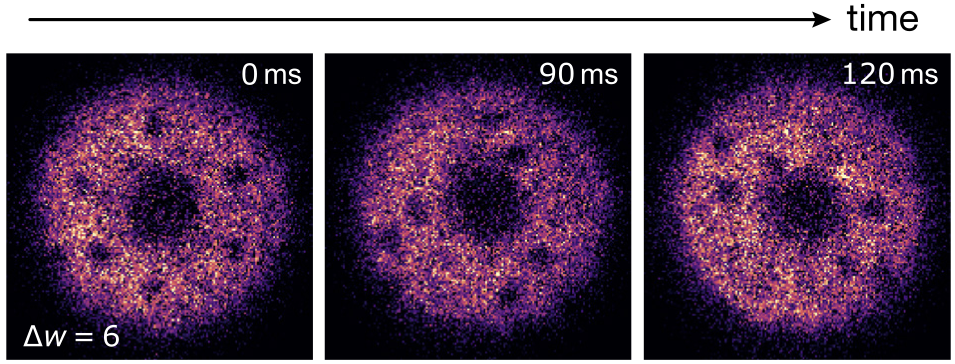 |
At the interface between two fluid layers in relative motion, infinitesimal fluctuations can be exponentially amplified, inducing vorticity and the breakdown of laminar flow. While shear-flow instabilities in classical fluids have been extensively observed in various contexts, controlled experiments in the presence of quantized circulation are quite rare. In our last work, we observe how the contact interface between two counter-rotating atomic superflows develops into an ordered circular array of quantized vortices, which loses stability and rolls up into vortex clusters. We extract the instability growth rates and find that they obey the same scaling relations across different superfluid regimes, ranging from weakly-interacting bosonic to strongly-correlated fermionic pair condensates. Our results establish connections between vortex arrays and shear-flow instabilities, suggesting a possible interpretation of the observed quantized vortex dynamics as a manifestation of the underlying unstable flow. Moreover, they open the way for exploring out-of-equilibrium phenomena such as vortex-matter phase transitions and the spontaneous emergence and decay of two-dimensional quantum turbulence. D. Henández-Rajkov et al. |


Fermions with tunable interactions... In the lithium lab we produce ultracold Fermi gases of 6Li to explore out-of-equilibrium dynamics and transport phenomena in strongly correlated fermionic matter. Atoms are confined into light-imprinted potential structures, simulating the motion of electrons in solid state devices. Our main goal is the study of two-dimensional strongly correlated phases, such as superfluidity across the BCS-BEC crossover and its robustness to disorder.
